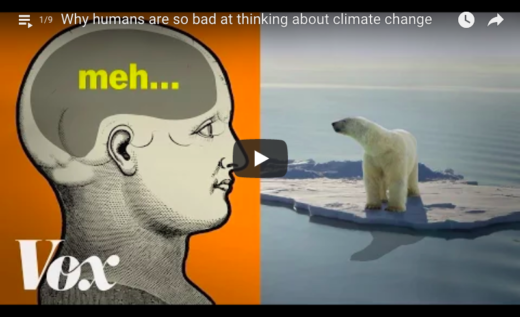Why Are They Great for Learning?
It's easy to dismiss a lot of what circulates on YouTube as frivolous, silly, or even obnoxious, but video essays are the opposite. They demand students' attention but not through cartoonish gesturing, ultra-fast editing, and shock value (which even some of the more popular educational YouTubers fall prey to) -- there's room to breathe in these essays. To capture attention, video essays use a time-tested trick: being flat-out interesting. They present compelling questions or topics and then dig into them using media as evidence and explication. This makes them a great match for lessons on persuasive and argumentative writing.
But what I really love most about video essays is that they have something at stake; they ground their arguments in important cultural or political topics, exposing the ways media represents gender or race, for instance, or how media evolves over time and interacts with the world at large. Most importantly, video essays model for students how YouTube can be a platform for critical communication.
How Can They Be Used in Classrooms?
First, a caveat: Most of the channels below offer content that'll work best in an upper-middle or high school classroom. Some videos can also be explicit, so you'll want to do some browsing.
Conversation starter or lesson hook: Many of these videos serve as great two- to 10-minute introductions to topics relevant to classrooms across the curriculum.
Active viewing opportunity: Since video essays present often complex arguments, invite students to watch and rewatch videos and outline their theses, key points, and conclusions.
Research project: Have students find more examples that support, or argue against, a video's argument. Students could also write a response to a video essay.
Copyright lesson: Video essays are a great example of fair use. Show students that by adding their own commentary, they can use copyrighted material responsibly.
Assessment: Have students create their own video essays to demonstrate learning or media-creation skills like editing.
Channels and Videos to Check Out
Nerdwriter
This is an eclectic channel that’s hard to pin down; basically, the video topics focus on whatever intrigues the channel’s creator, Evan Puschak. There’s everything from analysis of painting, to MLK’s “I Have a Dream” speech to the history of the fidget spinner.
Vox
Vox runs the gamut of issues in politics, culture, and pop culture. Their explainer-style videos can serve as conversation starters, and since they published multiple videos a week there’s no shortage of choices. Also, make sure to check out their playlists offering essays on everything from music to climate change.
Noisy Images
This channel does a masterful job of uncovering the layered meaning -- social, political, and cultural -- in music and hip-hop. While most of these videos are mature, and only suitable in very particular high school contexts, there’s brilliant work on everything from the poetic rhythms of the hip-hop group Migos to Kanye West’s stagecraft to music video minimalism. Any one of these videos could inspire a great lesson or unit.
Lindsay Ellis
Video essays are just one thing Lindsay does on her channel, and she’s really good at them. Her videos often deal with heady topics like “the other” but boils them down in accessible ways. She also isn’t afraid of throwing in a few jokes to keep things interesting.
Genius
There’s tons here focused on music with a specific emphasis on hip hop lyrics. One of my favorite series is called Deconstructed. While Deconstructed videos aren’t typical video essays, they present color-coded breakdowns of the rhyme schemes in hip-hop tracks. Students could apply this technique to their favorite songs or poems.
Every Frame A Painting
This now defunct channel has 30 videos with some of the best film analysis on YouTube. If you’re looking to help students analyze the language of film, this is the channel to check out. One of my personal favorites focuses on the work of a film editor.
Kaptain Kristian
Kristian focuses a lot on cartoons and comics which is a nice entry point for younger kids. His videos each touch on big ideas in storytelling. For instance, his examination of Pixar movies delves into their rich themes that break the often rote themes of other animated movies. This video would pair well with creative writing or literary analysis lessons.
CGP Grey
One of the more long-running essayists on YouTube, CGP Grey has a fast-talking style with a lot of animation, but does a good job of answering head-scratching questions like, “What if the electoral college is tied?” or explaining complex issues like copyright in a digestible way.
Lessons from the Screenplay
While this channel focuses on how screenwriting underpins film, the lessons offered in each of this channel’s video essays are broadly applicable to the craft of writing in general.
Kogonada
I saved this one for last because it’s the least traditional. Kogonada is a former academic turned filmmaker who gained popularity through his Vimeo video essays that, for the most part, elegantly edit together film clips without any narration. These videos are great if you’re teaching video and film editing class or film appreciation/criticism. Creating a narration-less video would be an excellent final project for students.


